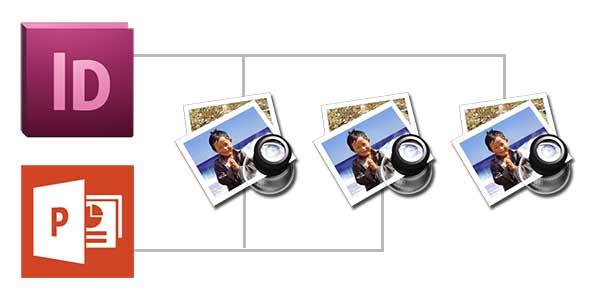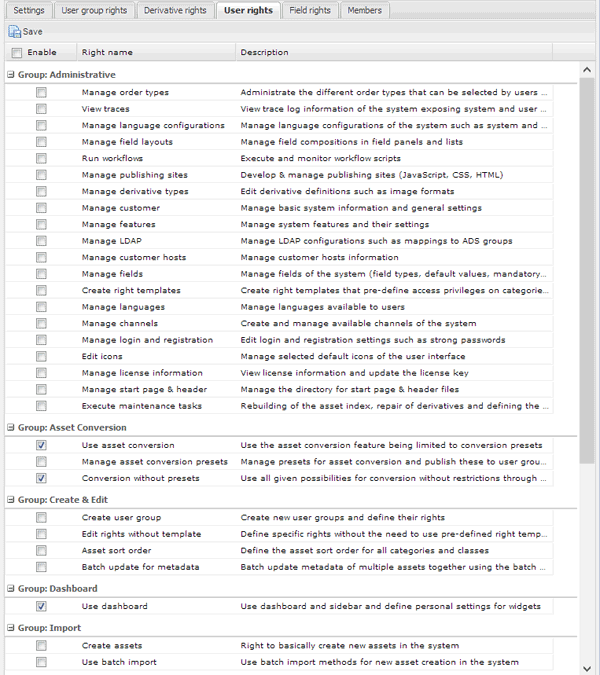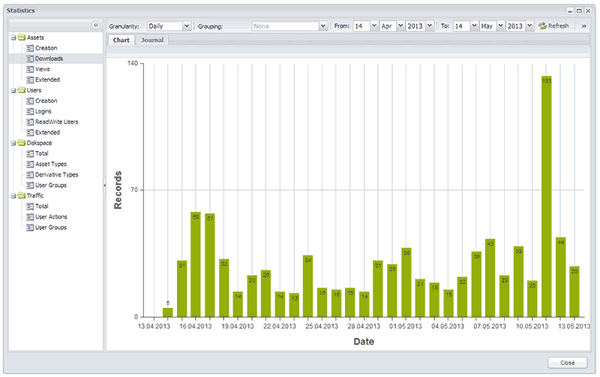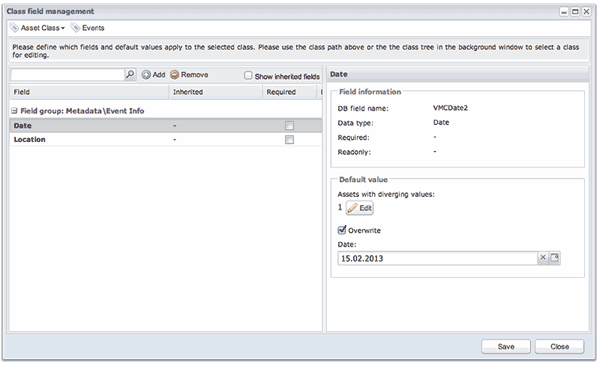Enterprise DAM Technologies
Digital asset management for the enterprise requires standards-based technologies that have been proven to work in environments that demand reliable, scalable computing performance. This page overviews enterprise DAM technologies built into Picturepark that make the software suitable for wide-scale, high-availability DAM deployment across the entire enterprise.
Enterprise DAM Technologies
Why Standards-based Technologies Matter
DAM software that is based on industry standards is easier to maintain and typically more reliable than proprietary technologies. What’s more, it can cost you less in the long run because you’ll always be able to find talented employees who know the software’s underlying technologies, and you’ll always have options when it comes to service.
DAM software built on proprietary databases, processing libraries or other technologies important for DAM might be usable for smaller work groups, but not for enterprise-class deployment.
Organizations that run Picturepark know they’re running an enterprise-class DAM solution that’s based on standards, and is reliable, manageable and cost-effective.
Picturepark Enterprise DAM Technologies
Some of the enterprise DAM technologies built into Picturepark include:
SQL Server database
SQL Server is among the world’s most widely deployed databases. IT departments know and trust SQL Server and, in many cases, the database is already in use at an organization, so training is minimized and hardware resources are readily available.

SQL Server’s relational capabilities make it perfect for digital asset management because the relationships between your digital assets are important. For example, if you want to see all images used in a given layout, or you want to be able to create multiple records from a PowerPoint, yet you want to make sure all those asset records remain related, you’re going to appreciate SQL Server.
SQL Server can also help ensure your metadata remains valid. For example, if a given metadata field should contain only a date value, SQL Server can make sure that happens. This becomes more important when your DAM is integrated with external software that might not have “data cleansing” controls in the user interface.
The last thing you need is for an integrated system to start polluting the metadata in your DAM. SQL Server can make sure that never happens.
Multi-tenancy / multi-instance deployment
Picturepark was built with multiple stakeholders in mind. In addition to the user groups you would expect from an enterprise DAM solution, Picturepark enables you to partition your system to serve the diverse needs of multiple stakeholders.

Once Picturepark has been configured for multiple “tenants,” users connect to a DAM system that appears to be uniquely their own. They see their own branding, and they see no one else’s assets, templates, activity logs or anything else. Picturepark manages the virtual walls between each tenant so you can focus on usability.
Assets that should be shared between tenants can be, which makes Picturepark’s multi-tenant features perfect for larger organizations. Departments can keep their own work isolated, while corporate files and taxonomies are shared across all stakeholders.
Multi-tenant DAM deployment can help agencies recoup some of their DAM expenses by charging clients for access, and it can help universities better afford enterprise-class DAM because they can share costs across departments, which each paying its fair share.
If you need to provide your stakeholders with discrete DAM systems, you can also run multiple instances of Picturepark, all managed from a single point. This option is useful if you plan to use Picturepark as the basis for a DAM services business, such as running a regional private Picturepark Cloud.
In all cases, you can see statistics that show which assets belong to whom, who is using how much storage space, and who’s using the most bandwidth.
Picturepark’s own Cloud Suisse SaaS DAM services, which have been in continuous operation since 2000, also rely on standard Picturepark multi-instance functionality.
Clustering (failover / load-balancing / service-based clustering)
High-availability computing is impossible without clustering. Picturepark enables you to configure clustering nodes to handle hot-standby failover, so that your system is always online. You can also use load-balancing clusters to keep high-demand environments operating at peak efficiency.
In addition, specific Picturepark services can be offloaded to computing clusters to ensure that process-intensive tasks like video processing don’t ever slow down the system for users.
Picturepark was designed for clustered environments, so configuration is easy and Picturepark cluster designs adhere to best-practice standards accepted by global data centers.
There is no limit on the number of nodes that can configured into a Picturepark cluster. Nodes and clusters can be configured and brought online at any time, without system downtime.
Granular permissions
Picturepark enables you to define exactly what users can and cannot do inside the system. This level of control goes all the way down to the metadata field level, and it’s a standard feature of all Picturepark systems. This enables you to build user rights schemas that govern access with razor-like precision.
To make rights assignments easy and consistent, rights templates are used. Picturepark maintains a connection between the rights template and the objects to which it was assigned, so changes made to the template are instantly propagated throughout the DAM system. (Template overrides are possible too.)

Service-oriented Architecture (SOA)
SOA describes a software design principle through which complete solutions are built from multiple components that each service a particular function. The primary advantage SOA offers is that the various “building blocks” upon which a complete solution is built can be best-of-breed, helping to ensure the solution is the best it can be.
Picturepark was designed and built in adherence to SOA principles, which helps make the software agile and easy to update to reflect market trends and customer requirements. This is also why so many internal services within Picturepark can be offloaded to clusters for improved performance.
Digital asset management software that is not based on SOA can be held back by the performance of their weakest links. In other words, even if 80% of the DAM is modern and performant, just 20% of under-performing code can lessen the value of the entire DAM. In the case of an SOA-compliant system like Picturepark, components can be more easily swapped out when better options become available, which helps keep the DAM solution modern and reliable.
Web Services API/SDK
The Picturepark Web Services API was designed for use over the Internet. Unlike traditional APIs, a Web Services API is designed for Cloud-to-Cloud connectivity. This enables Picturepark to integrate just as well with systems running around the world as it does with software running on the same machine.
.NET framework
The .NET framework enables Picturepark developers to leverage established, tested core software functions so they can better focus on what makes a DAM a DAM. Because .NET is also what drives many other enterprise applications, like SharePoint, Microsoft Dynamics CRM and the Kentico and Sitefinity CMS solutions, it’s much easier to integrate Picturepark into these environments. Picturepark provides a standard digital asset management integration for SharePoint that’s available to all customers.
LDAP/ADFS
Larger organizations, like multi-national corporations and universities, typically store employee (or student) personnel records in central database. LDAP and claims-based authentication for ADFS 2.0 enable Picturepark to leverage those systems for user authentication.
This saves Picturepark administrators from having to create users accounts for what could potentially be tens of thousands of users, or more. Rights are determined for user groups, and users are included into those groups based on existing organizational structures. This saves the Picturepark admin countless time, and it increases system security because access for departing employees can be disable from a single location, without the Picturepark administrator even having to know about it.
Local user accounts can be created on Picturepark even when LDAP is in use. This is handy when you need to provide temporary accounts for freelancers or clients who are not in your company’s LDAP directory.
Usage statistics
A built-in statistics system enables you to track virtually every action that occurs inside your Picturepark. Attractive, interactive graphs help you visualize the information you need, and you can export textual statistics for processing in other applications.
Statistic are also available for system use, so you can quickly see how much storage space a given file type or user group is using, and you can even see bandwidth usage too. This is ideal if you sell DAM services on your Picturepark and you need to bill according to system use.

Unlimited Web access
As the world’s first Cloud DAM, it’s not surprising that Web access to Picturepark is a standard feature. In fact, because Picturepark is browser-based, extended DAM services to the Web is natural.
Web users can have their own accounts, and each can have unique rights. Users can even create their own accounts from the Picturepark login window. You can enable instant limited access for new users, or you can require administrator activation of new accounts.
Users who don’t have permission to download an asset can request it from within Picturepark. The asset owner is notified to approve or deny the request. This enables you to provide audited downloads, which makes Picturepark useful even to users who have very limited rights.
Metadata flexibility
No digital asset management system offers more metadata flexibility than Picturepark. To ensure your metadata always reflects the current state of your content, Picturepark offer adaptive metadata technology.
Adaptive metadata means your metadata schemas can evolve as your content evolves. For example, works in production need Due Date and Art Director fields, while archived content might require Archive Date and Archive Location fields. License content would require License Expiration and Renewal Contact fields that wouldn’t make sense for content developed in house.

The idea behind adaptive metadata is that your metadata always reflects your content. Your videos don’t have Page Count metadata values, and your Photoshop files don’t have Duration fields. The DAM makes more sense to users, and the quality of your metadata is improved because you’re not sharing metadata fields for values that don’t quite fit.
Adaptive metadata also enables you to support multiple metadata standards by layering them. This ensures that the fields of one standard aren’t confused with those from another, and it permits you to support a metadata standard while you also provide fields for production or internal use.
Each digital asset in Picturepark can have its own metadata schema, if needed. There’s no limit on the metadata schemas you can define, and you can change things at any time.